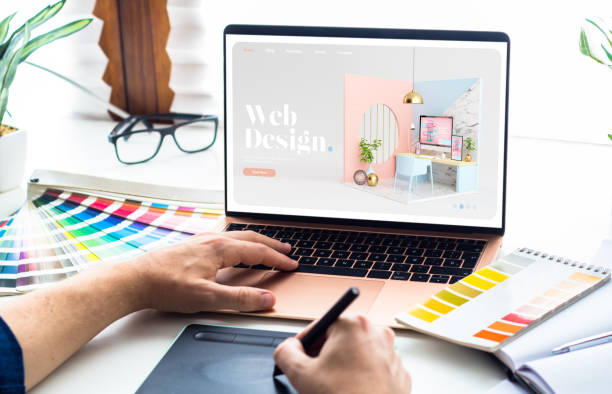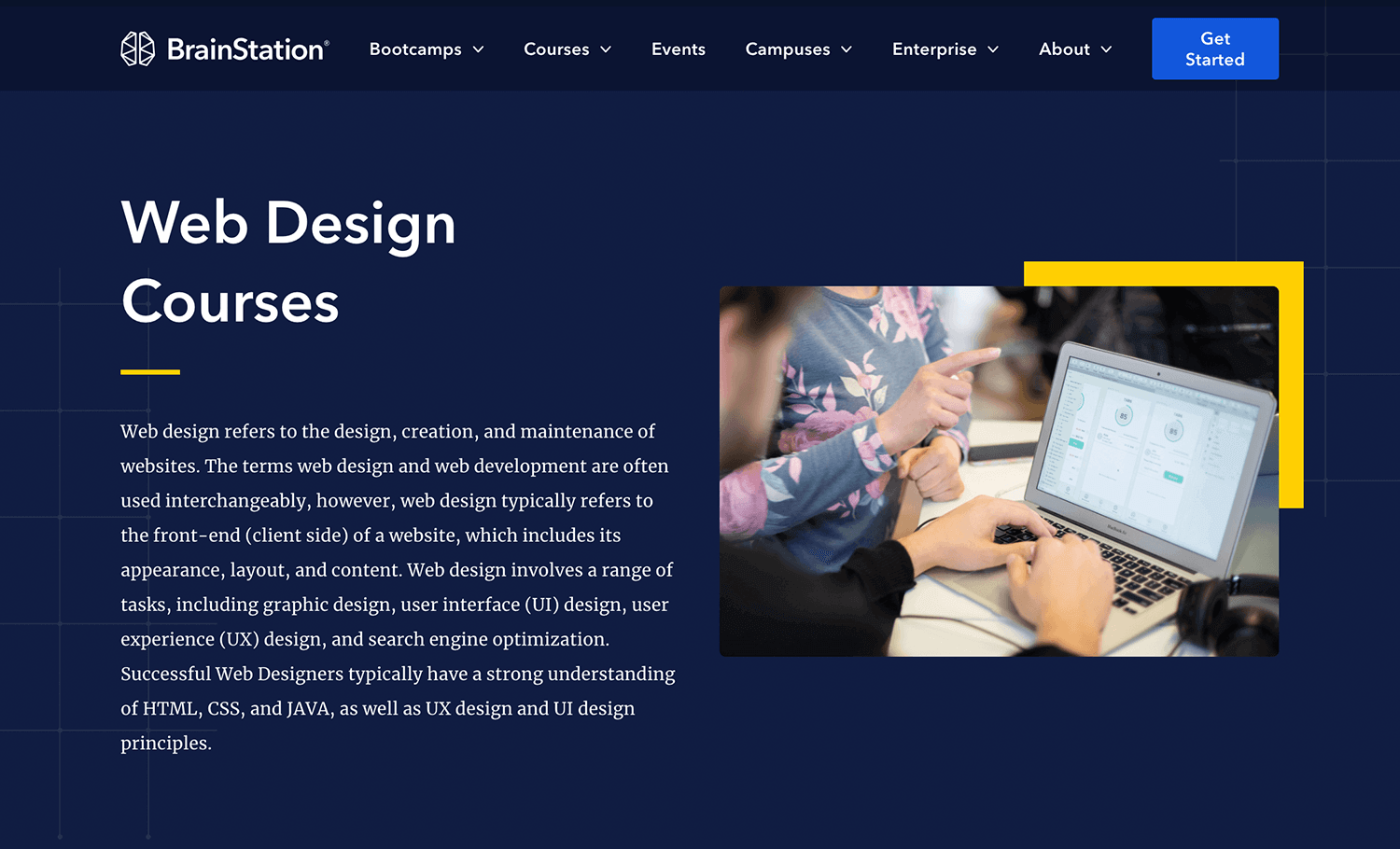Just How Website Design Influences Search Engine Optimization and Online Efficiency
Just How Website Design Influences Search Engine Optimization and Online Efficiency
Blog Article
Maximize User Experience With Cutting-edge Web Site Design Solutions
In today's electronic landscape, optimizing individual experience through cutting-edge internet site style services is crucial for businesses looking for to engage their target market effectively. The assimilation of interactive components can better raise the customer journey, prompting a reevaluation of typical design strategies.
Recognizing User-Centric Style

To apply user-centric style properly, it is important to conduct comprehensive research study, including user interviews, surveys, and functionality testing. These research methods give important information that educates style decisions, ensuring that the end product straightens with user assumptions. In addition, creating user personas can help developers empathize and picture with the end-users, assisting the style process towards much more pertinent options.
Additionally, repetitive design is a crucial component of user-centric methods. By continuously testing and refining styles based upon customer comments, developers can determine discomfort factors and areas of renovation, leading to a much more sleek end product. Ultimately, user-centric layout is not just a phase in the growth process but a constant commitment to prioritizing individual demands, causing more interesting and efficient electronic experiences.
Relevance of Responsive Layouts
As digital communications progressively occur across a variety of devices, the significance of receptive layouts can not be overstated. A receptive layout guarantees that a web site adapts seamlessly to different screen sizes, from desktop computer displays to mobile phones. This versatility is critical in today's multi-device landscape, where customers anticipate a consistent and interesting experience no matter exactly how they access content.
The key advantage of receptive style is enhanced user complete satisfaction. When an internet site is enhanced for all tools, it decreases the need for zooming, scrolling, or horizontal navigating, which can lead and frustrate individuals to greater bounce prices. Furthermore, online search engine like Google prioritize mobile-friendly websites in their ranking algorithms, making receptive designs essential for effective SEO strategies.
Furthermore, responsive layouts facilitate easier upkeep and updates. As opposed to handling different versions of an internet site for various gadgets, a single, fluid design can be modified, conserving time and resources. This alternative approach not only boosts performance yet additionally fosters brand name coherence throughout platforms. Ultimately, investing in receptive layouts is not simply a pattern; it is a basic concept of modern-day internet design that dramatically enhances user experience and interaction.
Enhancing Navigation and Access
Efficient navigating and access are essential components of a well-designed web site, significantly influencing individual involvement and fulfillment. An user-friendly navigating structure enables site visitors to discover information swiftly and without effort, reducing frustration and enhancing the chance of repeat visits. Executing clear, detailed labels for navigation links, along with a rational power structure, can lead customers seamlessly through the site.
Availability is equally vital, making certain that all individuals, regardless of their abilities or impairments, can communicate with the site properly. This can be attained via the use of ideal color contrasts, message sizes, and alt message for photos, which together boost the experience for visually damaged users. Furthermore, incorporating key-board navigation and screen viewers compatibility expands accessibility for customers with varied requirements.
Routine usability screening can supply important insights into navigating efficiency and accessibility problems. By collecting comments from actual customers, designers can recognize pain factors and make informed modifications. Eventually, focusing on navigating and availability not only cultivates inclusivity but additionally cultivates a favorable user experience, strengthening the brand's dedication to quality and customer care in an increasingly digital landscape.
Utilizing Visual Power Structure Efficiently
Visual hierarchy acts as a leading framework in internet site design, guiding customers' interest to one of the most vital aspects on a web page. By tactically arranging aesthetic components such as typography, color, and spacing, designers can develop a clear path for users to adhere to. This framework not only enhances individual experience but also improves content understanding.
One efficient way to establish aesthetic pecking order is via using size and range. next page Bigger aspects naturally attract even more focus, making headlines and essential visuals popular. Complementing this strategy with contrasting colors can better set apart key web content from additional information, guaranteeing that essential details sticks out.
Additionally, the setup of elements plays a critical function in guiding customer interaction. Utilizing a grid layout can produce a cohesive circulation, while whitespace assists to different web content and minimize cognitive lots - Website Design. This intentional spacing enables users to process info a lot more conveniently, leading to enhanced engagement
Finally, making use of consistent style patterns assists enhance visual power structure, offering individuals with familiar cues as they browse the website. By focusing on these concepts, designers can properly make the most of user experience, guaranteeing that site visitors can easily locate the information they look for.
Incorporating Interactive Elements
The incorporation of interactive elements into web site design can substantially boost individual involvement and overall experience. Interactive features such as polls, sliders, and quizzes not just captivate users yet additionally advertise energetic engagement, making the surfing experience extra memorable. By encouraging users to interact, websites can successfully preserve focus and reduce bounce rates.
Moreover, incorporating dynamic content like animations and hover effects includes an attractive layer of interactivity. These components can direct individuals without effort via the site, highlighting vital details and phones call to activity. Computer animated switches can attract interest and improve click-through rates.
Furthermore, customization via interactive tools such as chatbots or recommendation engines allows web sites to satisfy private preferences, cultivating a sense of connection. This customized method not just boosts individual complete satisfaction yet also encourages repeat visits.
Including analytics devices to track interactions provides valuable understandings into customer actions, enabling continual enhancement of the interactive elements. Eventually, a properly designed interactive experience transforms a passive surfing session right into an engaging trip, bring about raised user contentment and commitment. Therefore, integrating interactive elements is essential for making the most of customer experience in modern-day internet site design.
Conclusion

In today's electronic landscape, making best use of customer experience via cutting-edge site style remedies is vital for organizations looking for to engage their audience content effectively. Inevitably, focusing on navigating and availability not just cultivates inclusivity yet additionally cultivates a favorable user experience, enhancing the brand name's dedication to high quality and individual care in a progressively digital landscape.

In verdict, making the most of user experience via innovative site style remedies demands a commitment to user-centric principles. Website Design.
Report this page